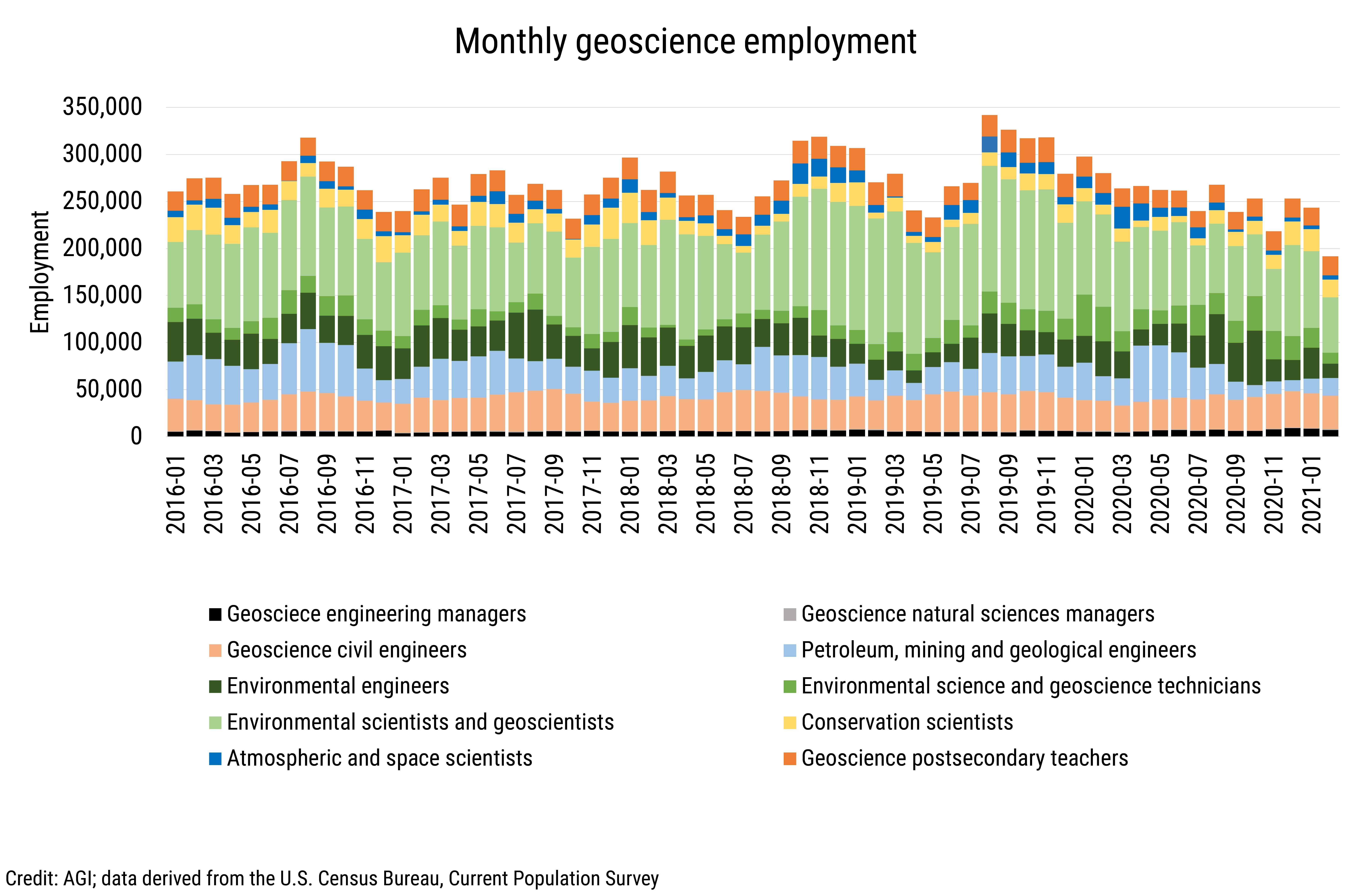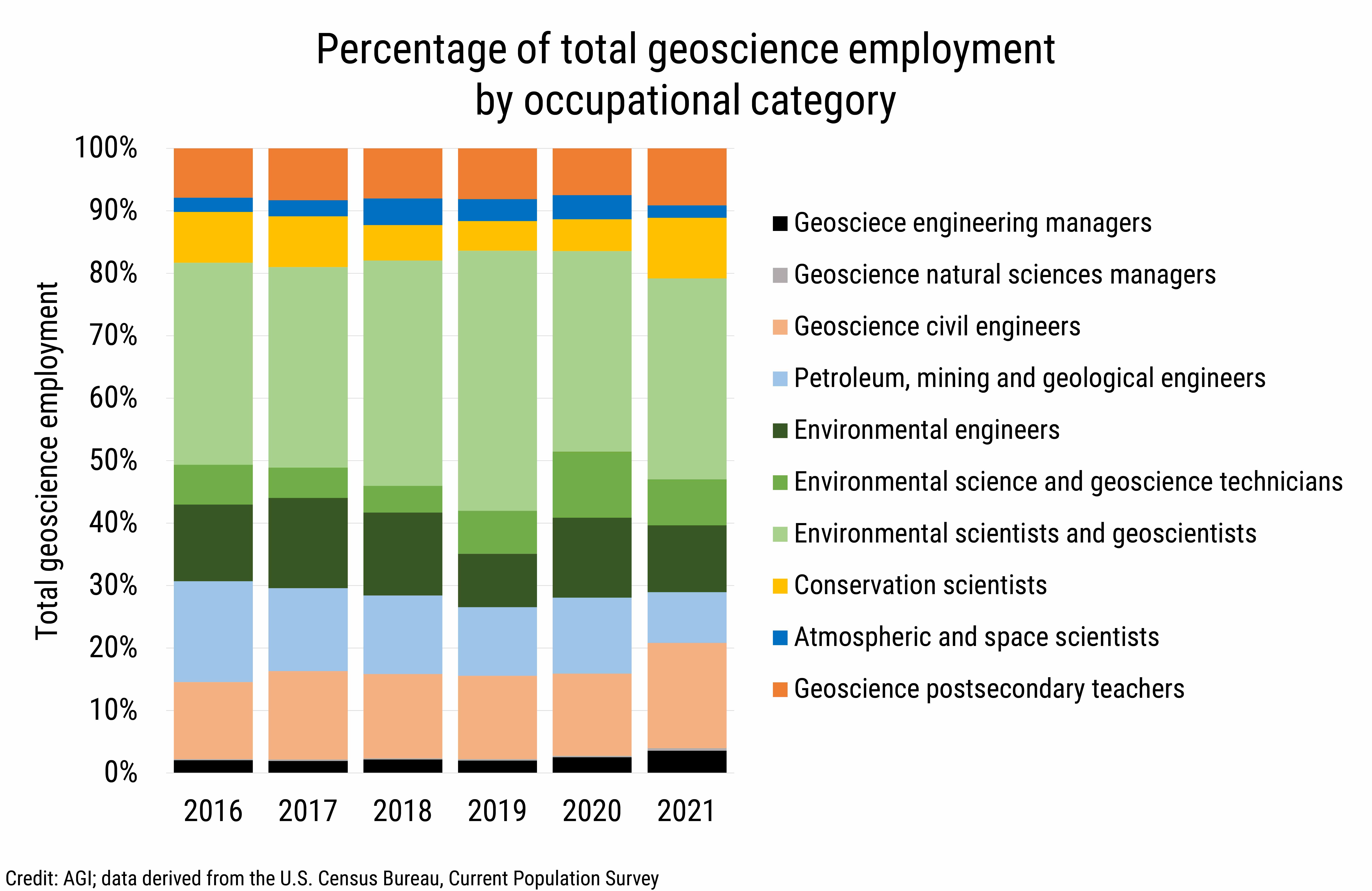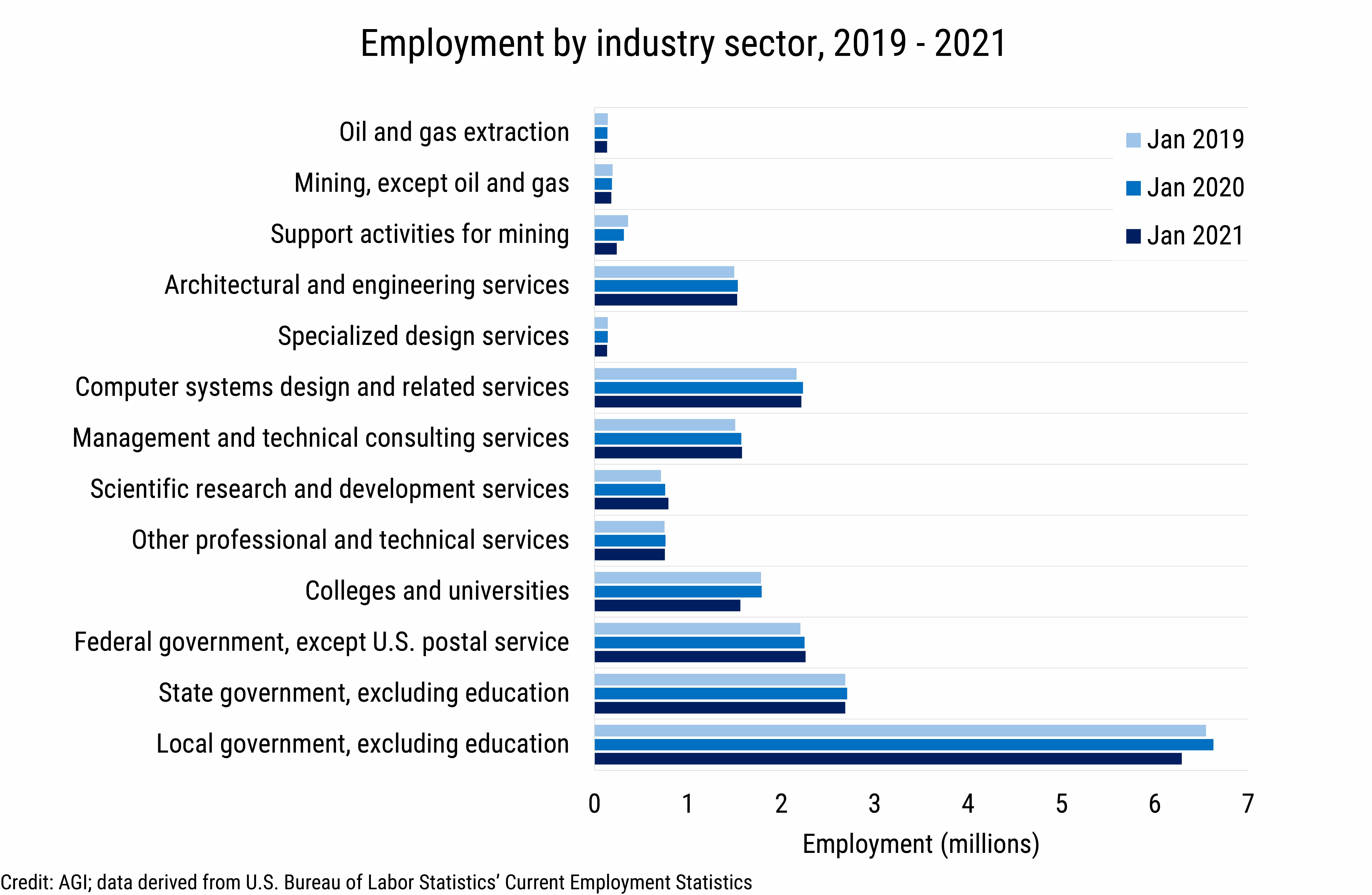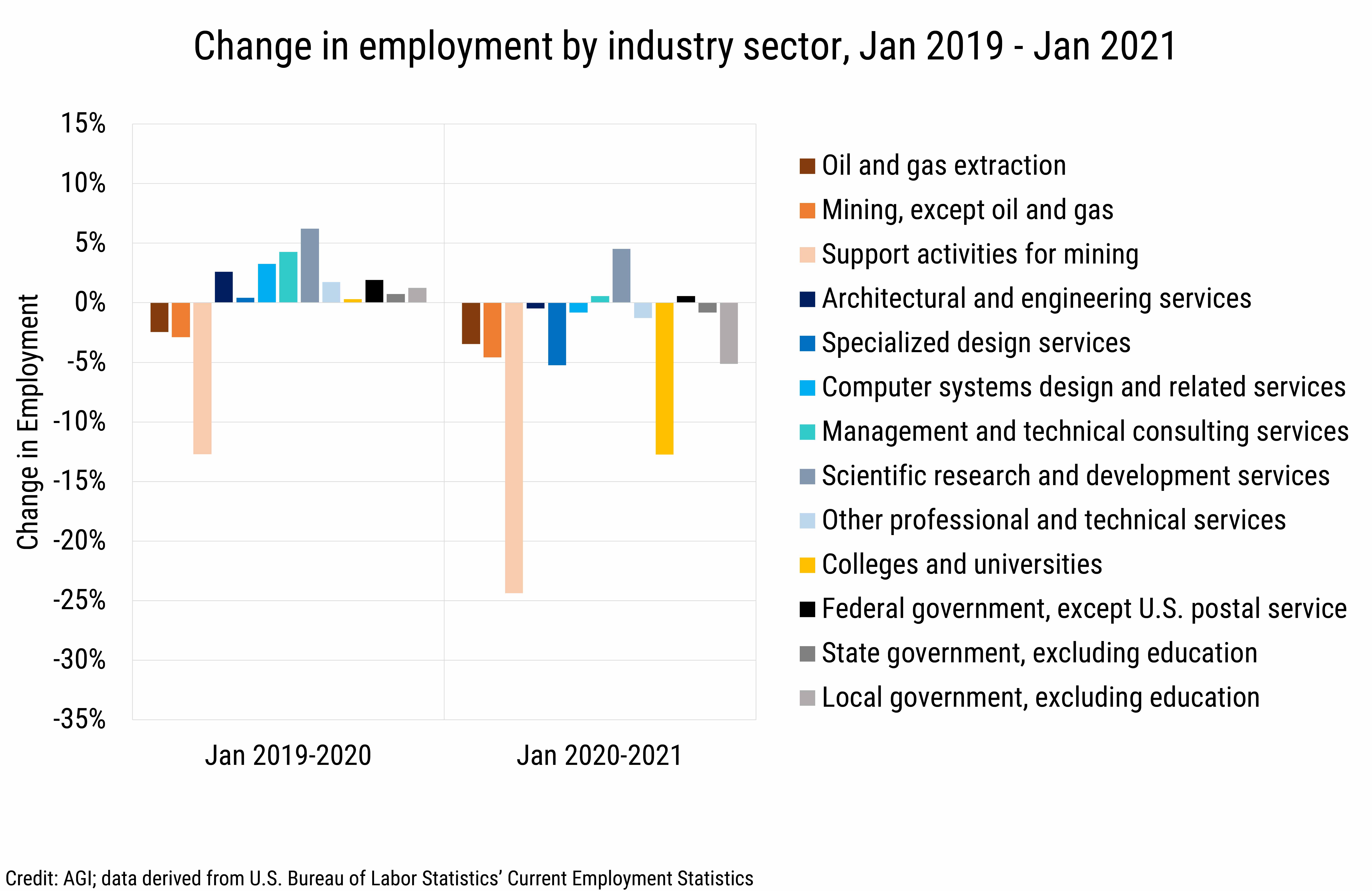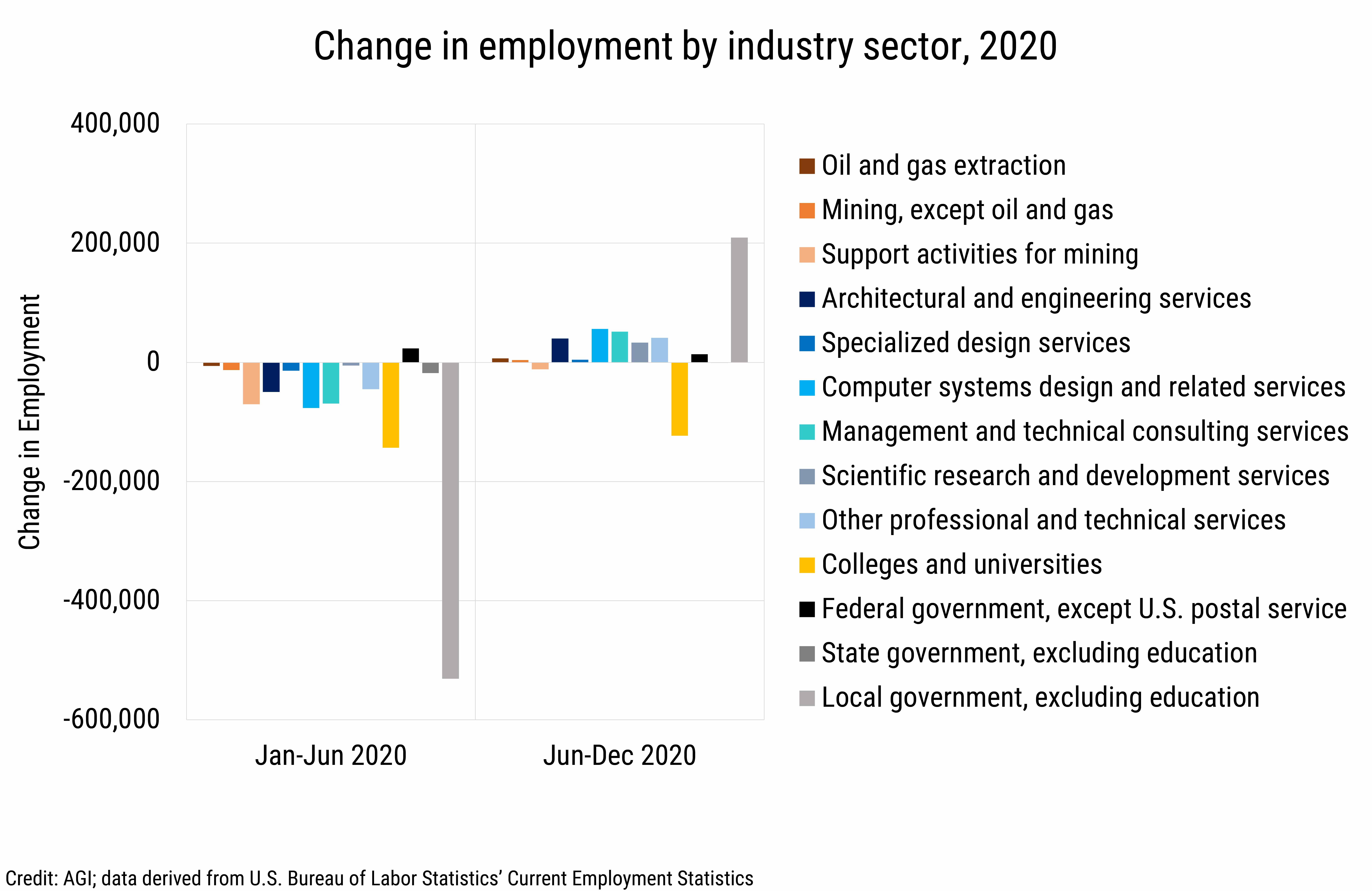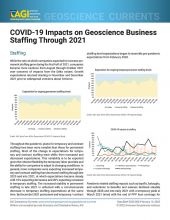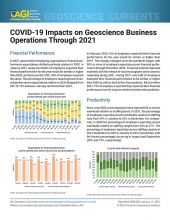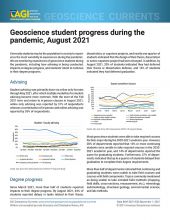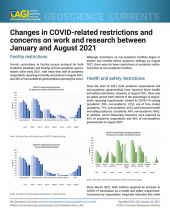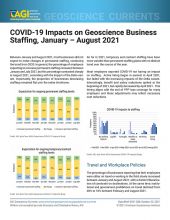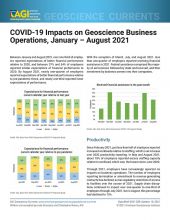Employment trends by occupational category
Data from the U.S. Census Bureau’s Current Population Survey provides monthly occupational employment data which allows us to examine employment trends in geoscience-related occupations since 2016. Between 2016 and 2019, total geoscience employment ranged between 231,500 and 341,800 where it peaked in August 2019. Since August 2019, geoscience employment has steadily declined to 191,600 by February 2021.
Environmental scientist and geoscientist occupations, which comprised 42% of total geoscience employment in 2019, saw the largest total decline in employment since August 2019, shedding just over 74,400 jobs by February 2021 (a 56% decline in environmental scientist and geoscientist employment). Petroleum, mining, and geological engineering occupations, which comprised 11% of total geoscience employment in 2019, shed just over 22,500 jobs between August 2019 and February 2021 (a 54% decline in petroleum, mining, and geological engineering employment). In 2021, environmental scientist and geoscientist occupations currently comprise 32% of total geoscience employment, and petroleum, mining, and geological engineering occupations comprise 8% of total geoscience employment. One possible drag on employment in the environmental scientist and geoscientist occupations is the contraction in the oil and gas industry and their demand for services related to domestic oil and gas exploration and production.
In 2020, employment contracted across most geoscience-related occupations except for geoscience engineering managers (+4,100), geoscience civil engineers (+5,400), and conservation scientists (+11,100). In 2020, the largest declines in employment were in petroleum, mining, and geological engineering occupations (-27,400) and environmental scientist and geoscientist occupations (-18,600).
Employment trends by industry
We turn to the U.S. Bureau of Labor Statistics’ Current Employment Statistics dataset to examine changes in monthly employment across industry sectors. Between January 2019 and 2020, gains in employment occurred across most industry sectors in which geoscientists primarily work, except for the mining, oil and gas extraction and support activities for mining sectors (which includes the support activities for oil and gas subsector). Across these sectors, employment declined by a total of 54,900 jobs (in total, not just geoscientists within these sectors), and most of the job losses were in the support activities for oil and gas extraction subsector.
Between January 2020 and 2021, employment declines occurred across all geoscience-related sectors, with the exception of the management and technical consulting services (+8,700 jobs), scientific research and development services (+34,100 jobs), and federal government (+12,800 jobs) sectors. The hiring of U.S. Census Bureau workers in August 2020 was the primary driver for the increase in the federal government sector and was not representative of geoscience employment trends within the sector. While the support activities for mining sector had the largest percentage change in employment in 2020 (-24%), the largest total employment declines were in the local government (-340,600 jobs) and colleges and universities (-228,200 jobs) sectors.
During the first half of 2020, impacts from the COVID-19 pandemic were seen across all employment sectors with the largest impacts occurring in April 2020 and recovery beginning during the second half of the year. In the primary industry sectors where most geoscientists work, the largest employment declines were in the local government (-530,000) and colleges and universities (-143,000) sectors during the first half of 2020. Employment increased across all sectors in the second half of the year, except for the colleges and universities sector and the support activities for mining sector (-11,000) where job losses were still occurring, albeit at a much slower pace than the first half of the year.
We will continue to provide current snapshots on the impacts of COVID-19 on the geoscience enterprise throughout the year. For more information, and to participate in the study, please visit: www.americangeosciences.org/workforce/covid19
Funding for this project is provided by the National Science Foundation (Award #2029570). The results and interpretation of the survey are the views of the American Geosciences Institute and not those of the National Science Foundation.


